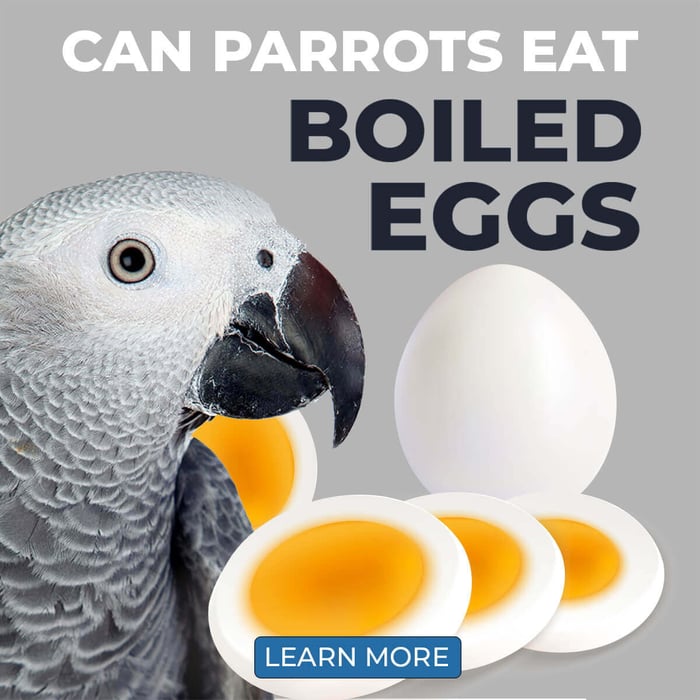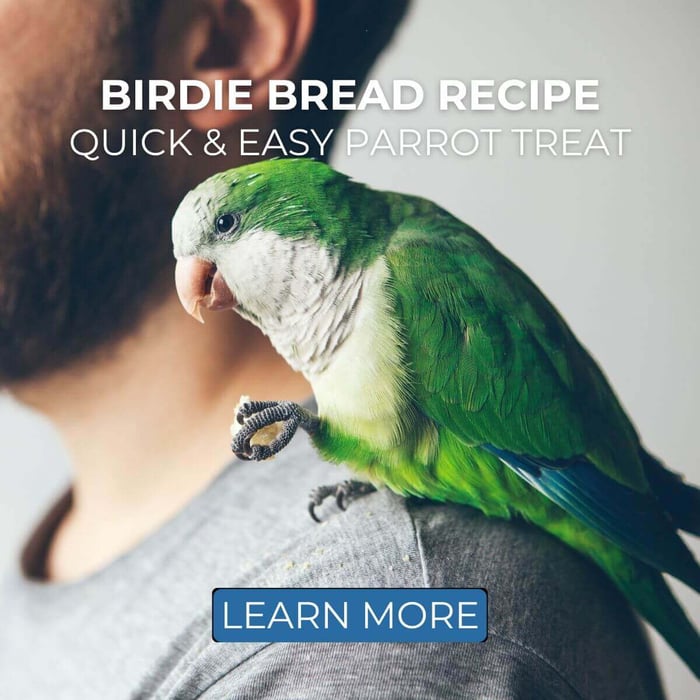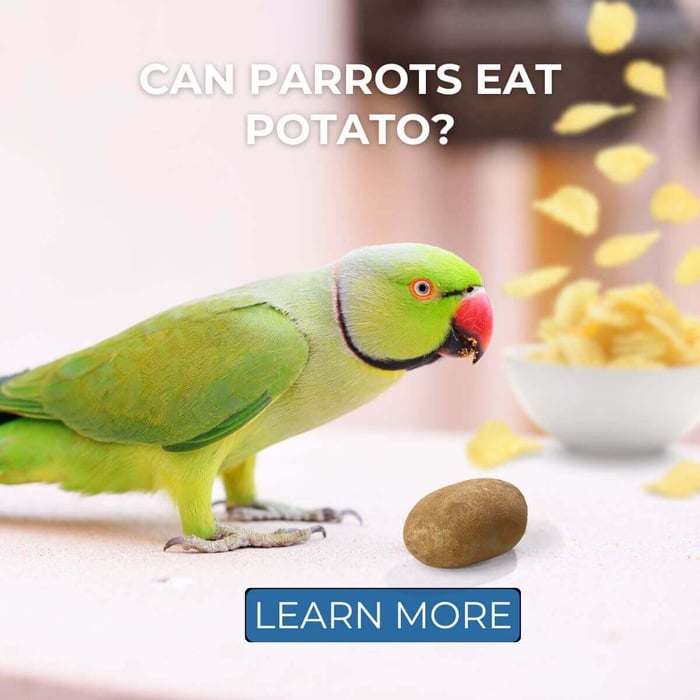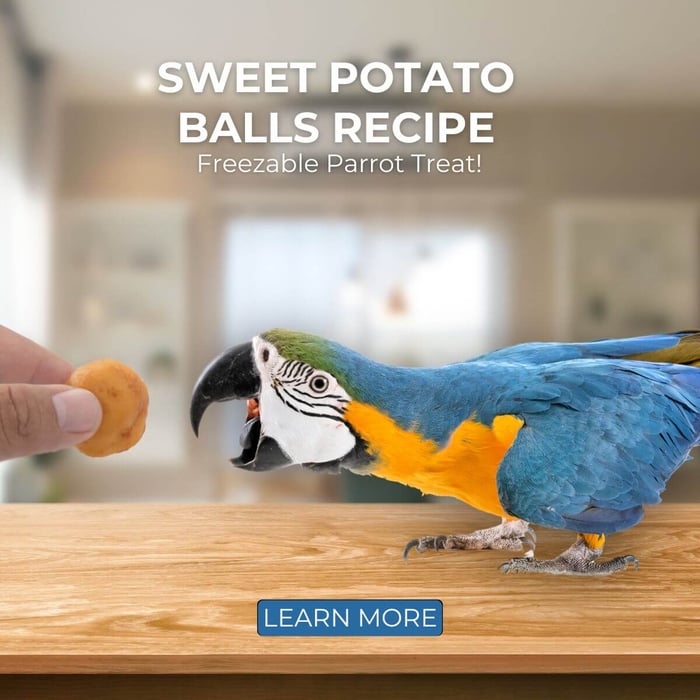Can Parrots Eat Orange Peels?
Parrots enjoy eating oranges and other citrus fruits and fruits are a great addition to their daily diet. But Can Parrots Eat Orange Peels? Is it safe for them? Parrots can eat orange peels only if they are soft and in moderation. Orange peels are a healthy source of vitamins and minerals for parrots.
Many parrots will peck away at the peels, breaking them apart into small bits to eat. Others enjoy eating the fruit in its entirety, peels and all, while others avoid the peels entirely. It’s all a matter of preference!
Keep reading as Parrot Essentials discusses the ins & outs of feeding orange peels to your parrot.
How Can Parrots Eat Orange Peels? 
Many of our pet parrots naturally hail from habitats where wild citrus fruits grow. Additionally, in some of these areas, humans have cultivated different types of citrus for thousands of years now. To the dismay of farmers, hookbills love visiting plantations to snack on the fruits.
The birds’ palate can accommodate the acidity of oranges and other citrus fruits, and they have well-suited enzymes to help them digest the orange pulp and peel. That is why pet parrots have no problem-consuming fruits like oranges, including eating orange peels.
As you may be aware, it’s important to moderate how much fruit you give your pet parrot. There are some great benefits to feeding fruit, as it’s high in essential micronutrients, but there are also significant downsides. Oranges, for example, are highly acidic and contain too much sugar, which can cause diabetes.
Orange peels are actually an excellent alternative to orange pulp, which is much higher in sugar. The peels do not contain nearly as much sugar, but they still contain the essential vitamins and minerals. Parrots tend to like them because they do have that typical citrus flavour and are brightly coloured.
How to Prepare Orange Peels for Your Parrot
- First, wash the orange thoroughly with soap and water.
- Next, peel the orange and save the peels on the side.
- Hang the orange peel in the cage or place it in its food bowl, depending on what you think it’ll like best.
- You can also use Treat Holders inside your bird’s cage or parrot stand.
- Remember, do not leave the peels in the cage for too long. Clear them out by the end of the day or within 24 hours.
You can also offer orange slices with the peel on so your bird can choose by itself whether it would like to eat it or not. As mentioned, don’t feed orange every day, although it’s fine as a regular item in your parrot snack rotation.
How to Feed Orange Peels to Your Parrot
- Whole: Just remove the whole peel and place it in the bird’s cage and let it peck at it
- Grated: Grate the orange peel and place some of it into the bird’s feeder
- Integrated into its water/food: blend some of the peel and add it into the bird’s food or water
Benefits of Orange Peels for Parrots
1. They Keep Oxidative Stress at Bay
Parrots are among the longest-living birds, with those in captivity having an even longer life span. Many parrot species have an average lifespan of about three decades.
Orange peels are naturally packed with antioxidants and polyphenols that fight free radicals, which cause premature ageing, illness, and cell damage. They fight oxidative stress in parrots when it occurs, helping the bird to live healthy and long.
2. They Aid In Healing Wounds
Orange peels contain large quantities of vitamin C, which aids in wound healing. Vitamin C is essential in the hydroxylation of lysine and proline to create collagen, which stimulates new cell growth.

3. They Aid In Boosting Immunity
The orange peel’s vitamin C also helps boost the bird’s immunity. They fortify the white blood
cells, which protect the body from diseases. Vitamin C supports the bird’s innate and adaptive immune systems and the epithelial barrier that protects against pathogens.
4. Improves Iron Absorption
The vitamin C derived from oranges and orange peels aids in iron absorption. Vitamin C captures the non-heme iron and stores it in an easily absorbable form in the body. Iron is essential for a parrot because it prevents anemia. If your parrot is diagnosed with anemia, the vet may recommend orange peels into its diet for vitamin C.
These birds do not like the taste of vitamins and mineral supplements added to their water. So this is an excellent way for them to consume the essential minerals and vitamins they need.
5. Prevents Diabetes In Parrots
As earlier mentioned, oranges can contain too much sugar, which is addictive to parrots. If you feed your parrot too much sugar, it can develop diabetes. An alternative to the sugary pulp is the less sugary peel with the same vitamin and nutrient value.
When to Avoid Giving Orange Peels
a) If They Are Not Organically Grown
Avoid giving orange peels to a parrot if you are unsure that the oranges have been grown organically. Oranges that are not organically grown tend to have elements of pesticides which can also be found on the peels. However, if you have grown the orange and used organic fertilizer, you can feed the peels to your parrot. Unfortunately, pesticides cause reproductive problems in birds like parrots.
b) If the Orange is Moldy
According to the USDA (United States Department of Agriculture), soft fruits and vegetables can get mouldy and contaminated below the surface. They have a high moisture content that makes them susceptible to getting mouldy. Do not feed mouldy peels to a parrot because they can cause food poisoning to your bird.
It is also not advisable to wipe the mould off the fruit and still serve it to your bird. Think of it this way: You wouldn’t eat fruit with mold wiped off, right? So why should your parrot?
c) If The Parrot Doesn’t Like Them
Some oranges have tough orange peels that also tend to taste bitter. Your parrot may not like the taste, so do not force your pet to eat the orange peels. Some peels are more bitter than others, so choose the oranges you feed your parrot carefully.
d) If They are Dried
Most dried fruit on the market contain sulfur dioxide, which preserves them and gives them a longer shelf life. Sulfur dioxide irritates the human respiratory system, causing wheezing, coughing, and shortness of breath. It has the same effect on the respiratory system of a bird, which is much more sensitive, which is why it can cause death in birds and poultry.
Unless you have dried the fruit or peels, do not give them to your bird.

e) If the Parrot Has Stomach Upset
Orange peels are high in fibre, and a lot of fibre can cause diarrhoea and constipation in parrots. As much as your parrot may love the peels, its body may be unable to digest them. As a result, the bird could suffer stomach discomfort with issues like bloating or cramping.
What Else Do Parrots Eat in An Orange?
Orange Pips
Parrots also eat orange seeds, which are also known as pips. You do not have to remove the pips. Just put an orange slice in the cage, pips and all, and the parrot will gobble everything.
Orange Juice
Parrots love freshly squeezed orange juice, but do not give yours concentrated juice. Dilute some of the juice in water to prevent your bird from drinking an absolute sugar bomb.
Also, do not give your parrot store-bought orange juice. It contains artificial sweeteners, coloring, and preservatives which can affect your bird’s health. Freshly squeezed juice is the way to go.
Best Types of Oranges and Orange Peels for Parrots
Although all oranges are great for your parrot to eat, some are better for the bird than others.
Mandarins
Mandarins are small oranges with a deep orange hue. They have soft peels, which parrots love because they are not tough to peck into. The peels are so soft that some people even eat them. However, the peels tend to be quite tart.
Because the peels are tart, when you serve them to your parrot, do not separate them from the actual fruit. The bird will enjoy the sweet flesh and tart skin together. Mandarin peels, like most oranges, have an antioxidant known as tangeretin, which lowers cholesterol and prevents diseases.
Mandarins are often seedless, making them an easy feast for your parrot.
Clementines
Clementines are even smaller than mandarins. In fact, they are considered some of the smallest oranges, but they are packed with vitamins and minerals. These oranges are favored as treats for smaller parrot species because they are seedless and easy to eat.
Clementine orange
Did you know that clementines are a hybrid of sweet oranges and mandarins? That means they are packed with a sweet flavour and high vitamin content. Their peels are soft and even used to make candied peels because they are not overly tart. For this reason, they are an excellent choice for your parrot to munch on.
Equally important is that clementine peels are also packed with antioxidants like hesperetin and tangeretin.
Tangerines
Tangerines are a specific type of mandarin orange with a bright orange color and tougher peels. They are not as sweet as clementines and mandarins; they have a tart flavor. They are available seasonally, so they may not be easy to come by.
Uniquely, the honey tangerine is one variation of tangerines that is very juicy and sweet. However, it is full of seeds with tough peels, so it may not be the best choice for smaller parrots.

Navel oranges
These are the most common oranges. Their juice is sweet and tangy simultaneously, and they have medium-thick peels. Navel oranges are excellent for making your parrot some juice, and their peel is not too tart.
Cara Cara Oranges
Among the types of navel oranges is the Cara Cara orange, which is extra sweet. But most importantly, they are known for their low acidity and minimal seeds. They are an excellent choice for parrot treats as their peels are not too tart.
Like the mandarins, you can serve them to your parrot whole because they are not too big. The Cara Cara is a cross between blood and navel oranges.
Blood Oranges
If you are going to serve your parrot blood orange, ensure it is the Tarocco variety, which is the sweetest. There are three varieties of blood oranges: Moro, the tartest; Sanguinello, which is medium; and Tarocco, the sweetest. Blood oranges are used for marmalade, and their peels are incorporated because they are not overly tart.
You can serve the peels separately or together with the Tarocco blood orange. The peels are a vibrant reddish-orange colour that is very attractive to parrots.
So, Can Parrots Eat Orange Peels?
Yes, they can, and it is healthy for them to do so. Having said that, you must ensure that you give the orange peels in moderation. Also, they must not substitute a nutritious meal for the parrot's needs. For example, don’t leave your parrot with only orange peels all day and no other food. Feed a high-quality complete parrot food as a staple and orange peel just as an occasional snack!
There are many oranges, but not all orange peels appeal to parrots. Choose oranges that have palatable peels, and avoid overly tart peels.
If you are new to parrot keeping, trying to improve your parrot’s diet or simply adding variety to your bird's food, visit our Parrot Cae Category: https://parrotessentials.co.uk/blog/category/parrot-care
Join our Facebook Group to share ideas and experiences when living with companion parrots.




